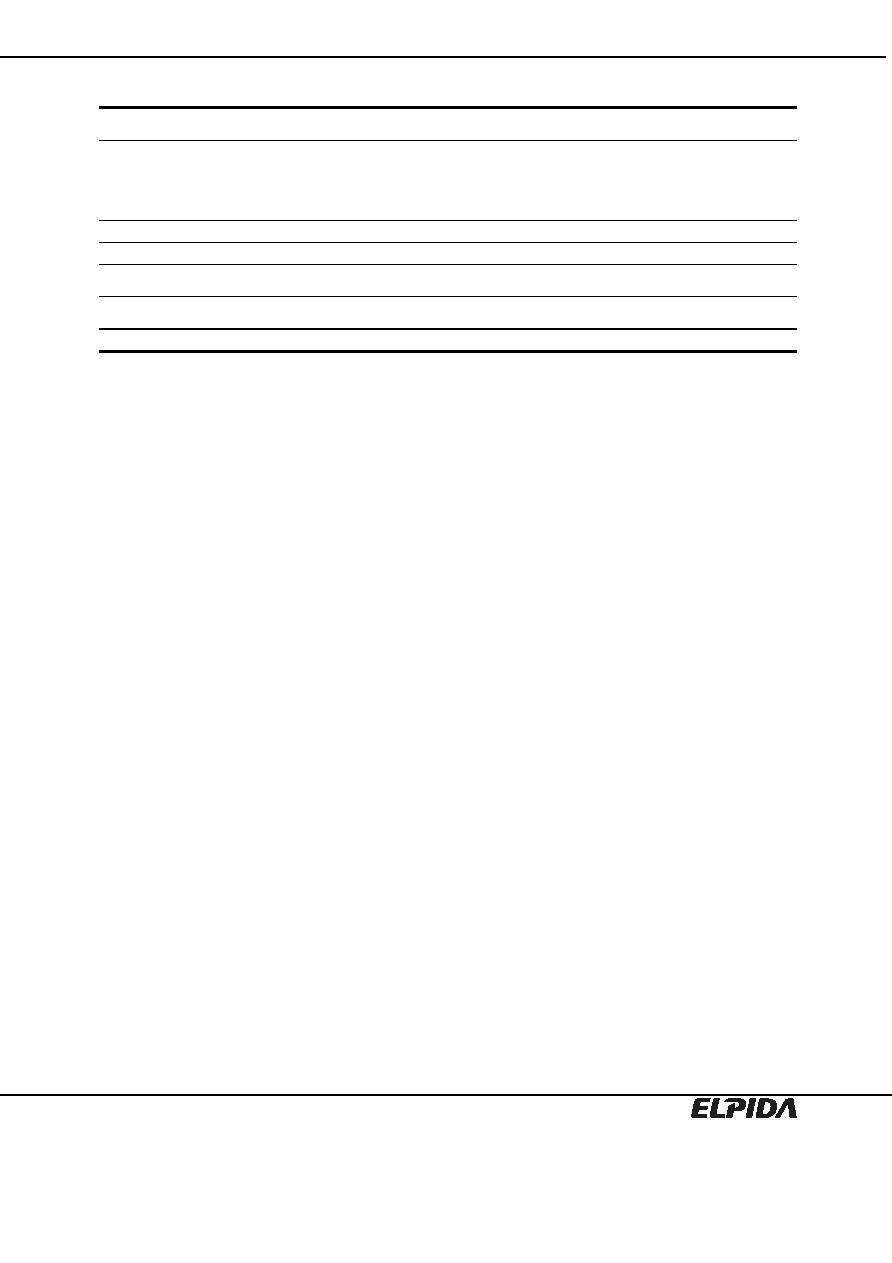- 您現(xiàn)在的位置:買賣IC網(wǎng) > PDF目錄299019 > EBE41FE4ACFT-6E-E (ELPIDA MEMORY INC) 512M X 72 DDR DRAM MODULE, DMA240 PDF資料下載
參數(shù)資料
| 型號(hào): | EBE41FE4ACFT-6E-E |
| 廠商: | ELPIDA MEMORY INC |
| 元件分類: | DRAM |
| 英文描述: | 512M X 72 DDR DRAM MODULE, DMA240 |
| 封裝: | ROHS COMPLIANT, FBDIMM-240 |
| 文件頁(yè)數(shù): | 7/22頁(yè) |
| 文件大小: | 205K |
| 代理商: | EBE41FE4ACFT-6E-E |
第1頁(yè)第2頁(yè)第3頁(yè)第4頁(yè)第5頁(yè)第6頁(yè)當(dāng)前第7頁(yè)第8頁(yè)第9頁(yè)第10頁(yè)第11頁(yè)第12頁(yè)第13頁(yè)第14頁(yè)第15頁(yè)第16頁(yè)第17頁(yè)第18頁(yè)第19頁(yè)第20頁(yè)第21頁(yè)第22頁(yè)

EBE41FE4ACFT
Data Sheet E1091E30 (Ver. 3.0)
15
Parameter
Symbol
min.
max.
Unit
Comments
Transmitter termination
resistance
RTX
41
55
16
D+/D- TX resistance
difference
RTX-Match-DC
4
%
RTX-Match-DC =
2
×|RTX-D+ RTX-D-| / (RTX-D+
+ RTX-D-)
Bounds are applied separately to high
and low output voltage states
Lane-to-lane skew at TX
LTX-SKEW 1
100 + 3UI
ps
17, 19
Lane-to-lane skew at TX
LTX-SKEW 2
100 + 2UI
ps
18, 19
Maximum TX Drift
(resync mode)
TTX-DRIFT-RESYNC
240
ps
20
Maximum TX Drift
(resample mode only)
TTX-DRIFT-
RESAMPLE
120
ps
20
Bit Error Ratio
BER
10
-12
21
Notes: 1. For details, refer to the JEDEC specification “FB-DIMM High Speed Differential PTP Link at 1.5V”.
2. Specified at the package pins into a timing and voltage compliance test load. Common-mode
measurements to be performed using a 101010 pattern.
3. The transmitter designer should not artificially elevate the common mode in order to meet this
specification.
4. This is the ratio of the VTX-DIFFp-p of the second and following bits after a transition divided by
the VTX-DIFFp-p of the first bit after a transition.
5. De-emphasis shall be disabled in the calibration state.
6. Includes all sources of AC common mode noise.
7. Single-ended voltages below that value that are simultaneously detected on D+ and D- are interpreted as
the Electrical Idle condition.
8. Specified at the package pins into a voltage compliance test load. Transmitters must meet both single-
ended and differential output EI specifications.
9. This specification, considered with VRX-IDLE-SE-DC, implies a maximum 15mV single-ended DC offset
between TX and RX pins during the electrical idle condition. This in turn allows a ground offset between
adjacent FB-DIMM agents of 26mV when worst case termination resistance matching is considered.
10. The maximum value is specified to be at least (VTX-DIFFp-p L / 4) + VTX-CM L + (VTX-CM-ACp-p / 2)
11. This number does not include the effects of SSC or reference clock jitter.
12. These timing specifications apply to resync mode only.
13. Defined as the dual-dirac deterministic jitter.
14. Pulse width measured at 0 V differential.
15. One of the components that contribute to the deterioration of the return loss is the ESD structure which
needs to be carefully designed.
16. The termination small signal resistance; tolerance across voltages from 100mV to 400mV shall not
exceed ± 5
. with regard to the average of the values measured at 100mV and at 400mV for that pin.
17. Lane to Lane skew at the Transmitter pins for an end component.
18. Lane to Lane skew at the Transmitter pins for an intermediate component (assuming zero Lane to Lane
skew at the Receiver pins of the incoming PORT).
19. This is a static skew. An FB-DIMM component is not allowed to change its lane to lane phase relationship
after initialization.
20. Measured from the reference clock edge to the center of the output eye. This specification must be met
across specified voltage and temperature ranges for a single component. Drift rate of change is
significantly below the tracking capability of the receiver.
21. BER per differential lane.
相關(guān)PDF資料 |
PDF描述 |
|---|---|
| EBR5334S | T-1 3/4 SINGLE COLOR LED, RED, 5 mm |
| EPY5334S | T-1 3/4 SINGLE COLOR LED, YELLOW GREEN, 5 mm |
| EC1448-D58U-00S | SINGLE PART CARD EDGE CONN |
| EC1SMG-20-24.576MTR | QUARTZ CRYSTAL RESONATOR, 24.576 MHz |
| EC2500SJT-FREQ3 | CRYSTAL OSCILLATOR, CLOCK, 53.125 MHz - 66.667 MHz, HCMOS/TTL OUTPUT |
相關(guān)代理商/技術(shù)參數(shù) |
參數(shù)描述 |
|---|---|
| EBE41FE4ACWR | 制造商:ELPIDA 制造商全稱:Elpida Memory 功能描述:4GB Fully Buffered DIMM |
| EBE41FE4ACWR-6E-E | 制造商:ELPIDA 制造商全稱:Elpida Memory 功能描述:4GB Fully Buffered DIMM |
| EBE41FE4ACWT | 制造商:ELPIDA 制造商全稱:Elpida Memory 功能描述:4GB Fully Buffered DIMM |
| EBE41FE4ACWT-6E-E | 制造商:ELPIDA 制造商全稱:Elpida Memory 功能描述:4GB Fully Buffered DIMM |
| EBE41RE4AAHA | 制造商:ELPIDA 制造商全稱:Elpida Memory 功能描述:4GB Registered DDR2 SDRAM DIMM (512M words x 72 bits, 2 Ranks) |
發(fā)布緊急采購(gòu),3分鐘左右您將得到回復(fù)。